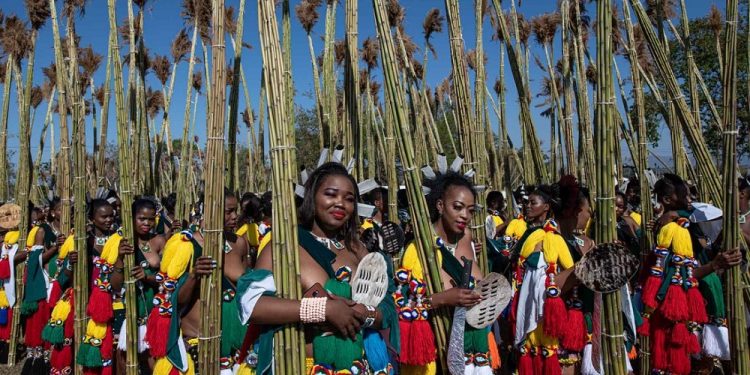
Umhlanga Reed Dance
The Umhlanga Reed Dance is one of the best-known cultural events that take place in Swaziland—or officially, the Kingdom of Eswatini. This holiday occurs at the end of August or the beginning of September, depending on the year, and lasts for over a week. Tens of thousands of girls participate in this festival, all of them dressed in bright clothing and presenting freshly-cut reeds to the Queen Mother to ostensibly repair the windbreak around her royal residence. Afterward, there is a large celebratory dance.
The History of the Umhlanga Reed Dance
This holiday was first established in the 1940s while Eswatini was under the rule of Sobhuza II. It is a festival that was adapted from a much older festival known as Umchwasho. Umchwasho was a traditional chastity rite common in Swaziland. During Umchwasho, unmarried women had to wear tassels made of wool around their necks. These women could not have sexual relations throughout the ceremony.
Facts About Eswatini
Since we’re discussing a festival observed in the Kingdom of Eswatini, we thought it would be a good idea to list some facts about this country. Facts that will hopefully place the Umhlanga Reed Festival in its proper context.
- Eswatini is one of the last absolute monarchies in Africa and the world, for that matter.
- The second-largest monolith in the world is at Sibebe Rock in Eswatini.
- Eswatini is home to over 130 different mammal species, 500 species of birds, 111 species of amphibians and reptiles, and over 3,500 different indigenous plants.
- In 2020, King Mswati III had 15 wives.
Observing the Umhlanga Reed Dance Festival
As stated earlier, this festival does not occur on a single day but is observed over an eight-day period. On the first day, girls from all over Eswatini gather at the Queen Mother’s royal village. They arrive from one of the hundreds of chiefdoms, and upon entering the village, they are registered for security purposes.
On the second day, the girls are divided into two groups: one consisting of girls aged 8 to 13 years old and another containing girls aged 14 to 22 years old. In the afternoon, they march (or are sometimes transported) to the reed fields, accompanied by their supervisors.
During the third day, the girls cut approximately 10-20 reeds using long knives and tie them into bundles. The following day, the girls return to the Queen Mother’s village while carrying their reed bundles.
On the fifth day, the girls take a day of rest to make final preparations for their costumes and their hair. On the sixth day, the girls place their reeds outside the Queen Mother’s quarters. After they are done, they go to the arena and dance. The dancing continues until the seventh day when the King is present.
On the eighth and final day, the King orders that cattle be slaughtered in honor of the girls. Once that is done, the meat is distributed to all the girls, and they return home.








